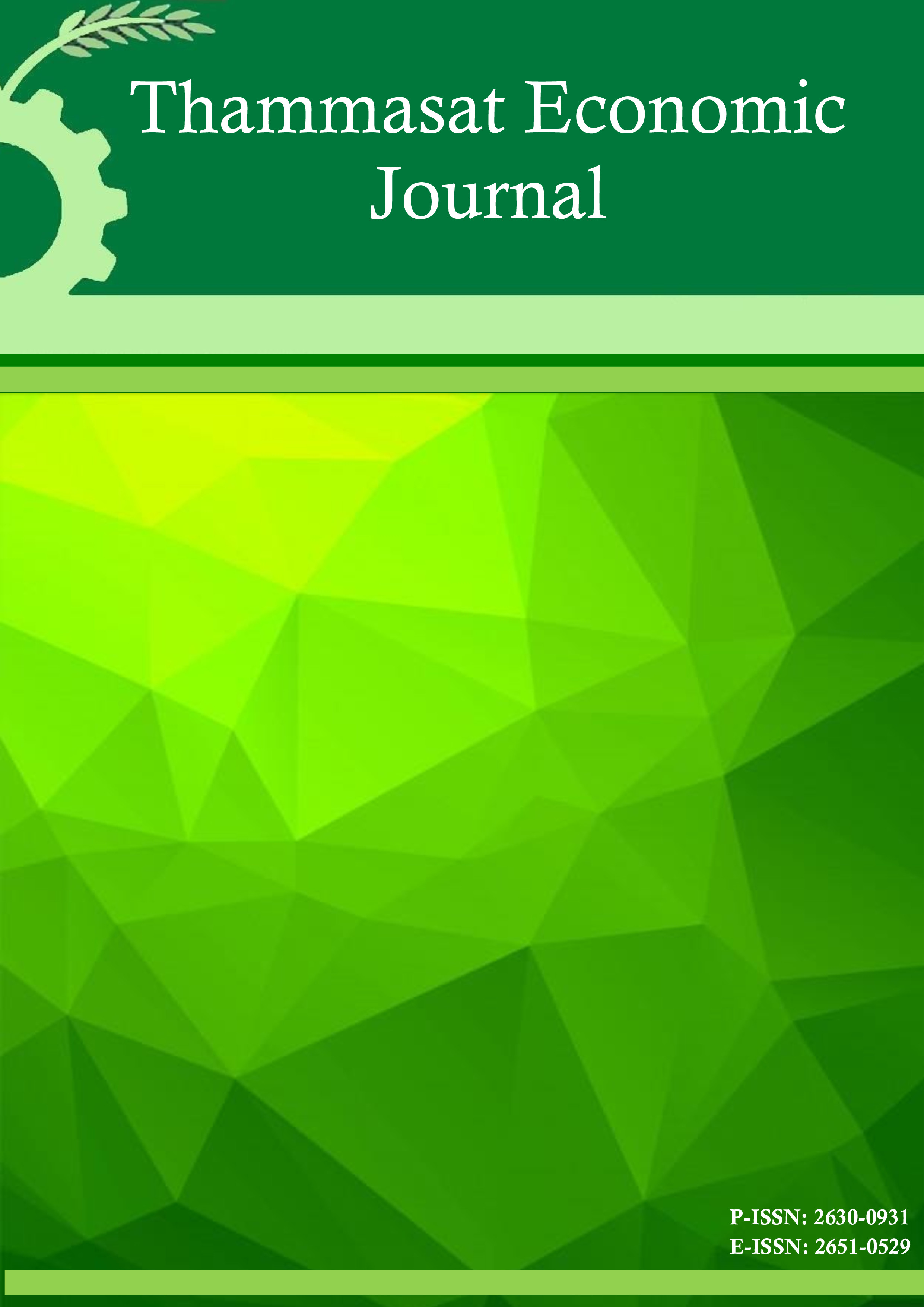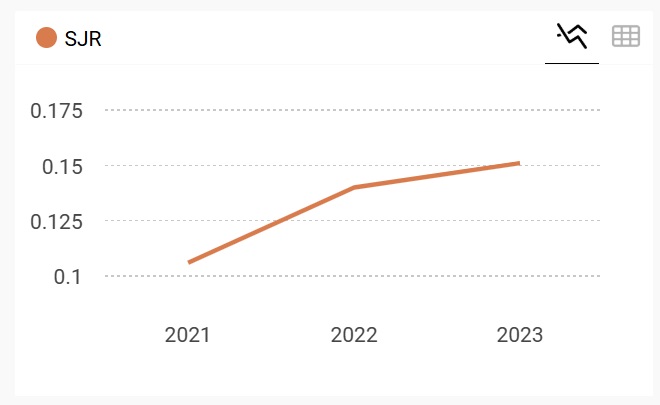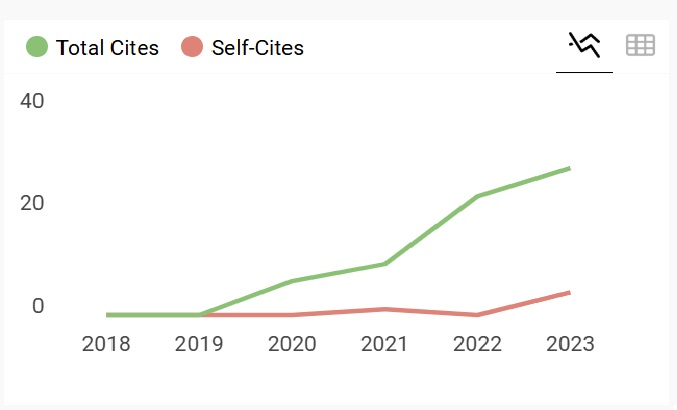Immigration – Productivity Nexus – Case of Thai Garment Industry
Abstract
This paper studies twenty six characteristics relating to the competitiveness of factories that employ immigrants from Burma, Laos and Cambodia, and compare these factories with those that do not use immigrant labor. The garment industry is used as a case study. Data from the 2006 Productivity and Investment Climate Survey by Thailand Productivity Institution is used for our analysis. We find that factories that use immigrants are inferior in twelve characteristics such as type and age of machine, ownership by foreigners, future plan for enhancing production capacity and quality, sales to MNEs, R&D investment, customers’ participation in R&D and employee training, business network brand ownership, and product improvement. This paper also tests whether competitiveness of the factories that employ immigrants is lower than those that do not hire any immigrants. It finds no evidence of the difference in competitiveness between the two. From interviews, the major problem facing the garment industry in Thailand is the shortage of labor.
References
2. Acemoglu, D. (1998). Why Do New Technologies Complement Skills? Directed Technical Change and Wage Inequality. Quarterly Journal of Economics , 113(4):1055-89.
3. Asian Research Center for Migration (ARCM), (2004) Thailand: Improving the Management of Foreign Workers. International Organization for Migration and International Labour Office, Bangkok. In Collaboration with Institute for Population and Social Research (IPSR), and Thailand Development Research Institute (TDRI).
4. Athukorala, P. (2006). International Labour Migration in East Asia: Trends, Patterns and Policy Issues., Asian-Pacific Economic Literature, 20, 18-39.
5. Bhagwati, J. (2004). In Defense of Globalization. New York: Oxford University Press.
6. Borjas, G. J. (1994). The Economics of Immigration. Journal of Economic Literature, 32, 1667-1717.
7. Borjas, G. J. (2001). Does Immigration Grease the Wheels of the Labor Market?. Brookings Papers on Economic Activity: 1:69-119.
8. Borjas, G. J. (2003). The Labor Demand Curve Is Downward Sloping: Reexamining the Impact of Immigration on the Labor Market. Quarterly Journal of Economics, November 2003, 1335-1374.
9. Borjas, G. J. Freeman, R. and L. Katz. (1997) How Much do Immigration and Trade Affect Labor Market Outcomes? Brookings Papers on Economic Activity, 1997 (1), 1-90
10. Beesey, A. (2004) Thailand: Improving the Management of Foreign Workers: Case Studies on Five Industrial Sectors. International Organization for Migration and International Labor Office. Bangkok. www.ilo.org/public/english/region/asro/bangkok/library/pub15.htm
11. Bryant J. and Rukumnuykit P. (2007) Does Immigration to Thailand Reduce the Wages of Thai Workers? Labor Migration in the Greater Mekong Sub-region. June 2007.
12. Butcher, K.F. and D. Card. (1991) Immigration and Wages: Evidence from the 1980’s American Economic Review, Papers and Proceedings, 81 (2), 292-296.
13. Card, D. (1990). The Impact of the Mariel Boatlift on the Miami Labor Market. Industrial and Labor Relations Review, 43, 245-257.
14. Card, D. (2001). Immigrant Inflows, Native Outflows, and the Local Labor Market Impacts of Higher Immigration. Journal of Labor Economics,19, 22-64.
15. Card, D, and J. DiNardo, (2000). Do immigrant inflows lead to native outflows?. American Economic Review.
16. Chalamwong Y., Vijitsrikamol, K., Khamprapai K. and Suwanruang, M. (2002). Case Study on Agriculture Sector. A Paper Prepared for IOM/ILO Project: Thailand: Improving Migration Policy Management with Special Focus on Irregular Labor Migration Unpublished Paper.
17. Goldin, I. and Reinert, K. (2006) Globalization for Development: Trade, Capital, Aid, Migration and Policy. Washington, DC: World Bank and Palgrave Macmillan. Examines the key economic flows and shows how policies at the national global level are required to make globalization work for development.
18. Irwin, D. (2005) Free Trade Under Fire, Princeton University Press.
19. Kulkolkarn K. and Potipiti T. (2007) Mmigration, Wages and Unemployment in Thailand. Chulalongkorn Journal of Economics, vol: 19/1 April 2007, p.1-22.
20. Kohpaiboon, A. (2007). Clothing Industries in Kohpaiboon, A., Techakanont K., and Sirasoontorn, P. Thailand: Field Survey Report, Country ERIA Related Joint Research Project Series 2007, No. 34, Economics Research and Training Center (ERTC), Faculty of Economics, Thammasat University.
21. Krikorian, M. (2000). Guestworker Programs: A Threat to American Agriculture.Testimony Prepared for the U.S. House of Representatives, Committee on the Judiciary, Subcommittee on Immigration, Border Security, and Claims.
22. Kritz, M. and Gurak, D.T. (2001). Interstate Migration of US Immigrants: Individual and Contextual Determinants. Social Forces, vol: 78 no: 3, p.1017-39.
23. Krugman, P. Competitiveness-A Dangerous Obsession. Foreign Affairs, 73(2), 29-44.
24. Lewis, W.A. (1954) Economic Development with Unlimited Supplies of Labour. Manchester School, 22(2): 139-191.
25. Lewis, E. (2005). Immigration, Skill Mix, and the Choice of Technique. Federal Reserve Bank of Philadephia.
26. Lind, M. (2006 June 8). A Labour Shortage Can Be a Blessing, Not a Curse. The Financial Times.
27. Martin, P. (2001). There Is Nothing Permanent Than Temporary Foreign Workers. Center for Immigration Studies.
28. Martin, P. (2007). The Economic Contribution of Migrant Workers to Thailand: Towards Policy Development. Bangkok: ILO Sub-regional Office for East Asia.
29. Ottaviano, Gianmarco I.P. (2005) The Long run effect of Immigration on Productivity: Theory and Evidence from the U.S.
30. Quispe-Angoli, M. and M. Zavodny. (2002). The Effect of Immigration on Output Mix, Capital, and Productivity.
31. Sarig, Y. Thompson, J., and G. K. Brown . (2000). Alternative to Immigrant Labor? The Status of Fruit and Vegetable Harvest Mechanization in the United States.Center of Immigration Studies.
32. Tella, A. (2006 September30). Productivity and immigration. The Washington Times.
33. Thailand Development Research Institute (TDRI), (2004) Thailand: Improving the Management of Foreign Workers. International Organization for Migration and International Labour Office, Bangkok. In Collaboration with Institute for Population and Social Research (IPSR), and Asian Research Center for Migration (ARCM).
34. Vasuprasart, P. (2008). Inter-state Cooperation on Labor Migration: Lessons Learned from
35. MOUs between Thailand and Neighbouring Countries. Bangkok: Regional Office for Asia and Pacific.
36. Wolf, M. (2005). Will Globalization Survive? Third Whitman Lecture, Institute for International Economics.
37. World Bank (2008) Thailand Investment Climate Assessment Update.









